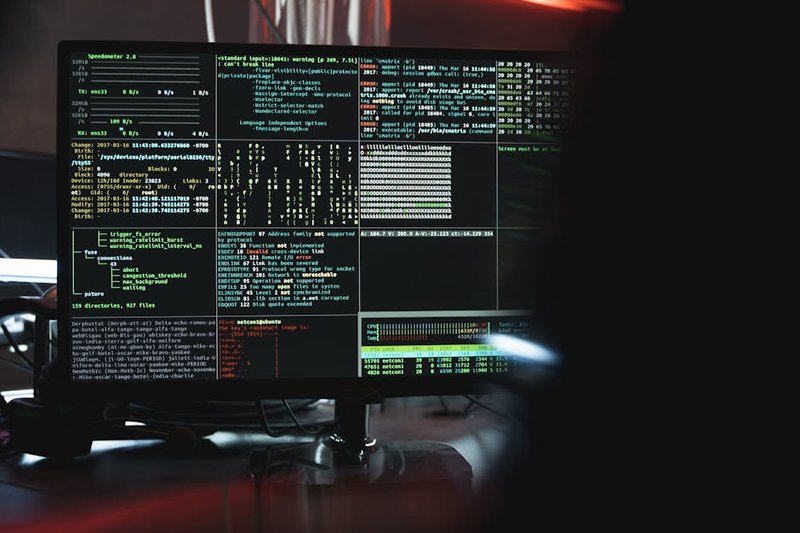There’s something poetic about the way light filters through Mira Patel‘s apartment window. It illuminates her modest living room, where circuit boards and soldering tools share space with books on Hindu mythology. I notice a small statue of Lord Shiva on her workbench—the destroyer and transformer in Hindu tradition, placed intentionally beside her latest creation.
“People think technology is just cold circuits and lifeless code,” says Mira, adjusting her glasses as she carefully solders a connection on what looks like a modified hearing aid. “But I see devotion in it. Creation, preservation, transformation—just like the Trimurti.”
At 63, Mira isn’t your stereotypical tech innovator. After retiring from teaching high school science in Queens, she’s become what industry insiders call a “compassionate technologist”—someone who develops tech solutions specifically addressing human needs often overlooked by major corporations.

What strikes me most about Mira’s innovation isn’t its technical sophistication, but its purpose. Her device, which she calls “Echo,” helps elderly Hindu immigrants participate in temple services remotely. It features simplified controls and transmits not just visual feeds but temple scents—a feature she added after noticing how smell triggered her mother’s religious memories even as dementia progressed.
“Technology should serve humanity, not the other way around,” she tells me, a philosophy that places her among a growing movement of innovators focusing on what experts are calling “soul-centered technology.”
Mira – The Human Face of Innovation
Dr. James Wilson, technology ethicist at Cornell University, explains this shift: “For decades, tech innovation has been driven by what’s possible rather than what’s needed. But we’re seeing a fundamental change—innovators asking ‘should we?’ instead of just ‘can we?'”
This trend toward more humanistic technology isn’t limited to individual creators like Mira. Even within major tech hubs, small teams are carving out space for what they call “high-touch tech”—innovations that enhance human connection rather than replace it.
In Seattle, Marcus Greene left a lucrative position at a major tech corporation to develop digital tools for hospice workers. “I was tired of optimizing ad clicks,” he tells me over video chat. “Now I’m helping create technology that honors the sacred space of end-of-life care.”
His team’s software, called “Memoria,” helps hospice workers record and organize patients’ stories and final wishes. It then generates personalized memory books for families—combining AI-generated narrative structures with the authentic voice and memories of their loved ones.
Mira – The Intersection of Ancient and Modern
What fascinates me about these innovators is how many draw inspiration from ancient traditions. Mira’s connection to Hindu deities, particularly Shiva—who she describes as “the ultimate transformer”—informs her approach to creating technology that transforms isolation into connection.
“In Hinduism, Shiva is depicted as both destroyer and benefactor,” explains Dr. Ananya Chakravorty, professor of Religious Studies at NYU. “Many technologists are finding metaphors in these ancient figures—seeing destruction not as something negative, but as necessary for transformation.”
This unexpected marriage of ancient wisdom and cutting-edge technology represents what Dr. Wilson calls “temporal hybridization”—the integration of timeless human values with modern capabilities.
The Blind Spots of Innovation
Not all these efforts succeed, of course. In my conversations with dozens of these innovators, a pattern emerges: their passion sometimes blinds them to practical limitations.
Mira admits her “Echo” device remains too expensive for mass production. “I sometimes get so caught up in making it perfect that I forget the goal is getting it to people who need it,” she confesses.
Marcus faces different challenges. “We’ve had to be careful not to technologize grief,” he says. “Early versions of Memoria actually inhibited natural grieving by making everything too efficient, too clean. We had to deliberately build in spaces for messiness, for human awkwardness.”
These blind spots highlight the tension between technological optimization and human experience—a tension that defines much of contemporary tech development.

The Future is Human
Despite these challenges, experts predict this human-centered approach will define the next wave of innovation. “The tech industry is maturing,” says Vivian Santos, venture capitalist specializing in social impact startups. “We’re moving beyond the naive techno-utopianism of the early internet era toward something more grounded in human needs.”
This shift comes none too soon, according to critics who’ve long warned about technology’s dehumanizing potential. “For years, we’ve adapted humans to technology,” notes Dr. Wilson. “Now we’re finally seeing concerted efforts to adapt technology to humans.”
For Mira Patel, this philosophy is nothing new. As our interview concludes, she shows me her latest project—a digital prayer wheel that helps Alzheimer’s patients maintain spiritual practices despite memory loss.
“Look,” she says, pointing to the small Shiva figure watching over her workbench, “destruction isn’t just about ending things. It’s about creating space for something new, something better.”
As I leave Mira’s apartment, I reflect on how these everyday innovators embody a profound truth: technology’s greatest potential isn’t in transcending humanity, but in helping us become more fully human. In their hands, code becomes poetry, circuits carry compassion, and ancient wisdom guides our digital future.
Perhaps that’s the most remarkable innovation of all.



